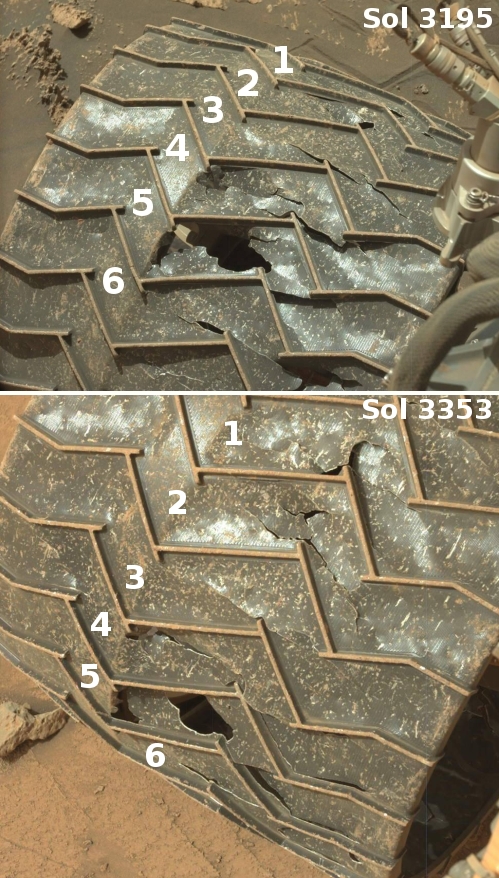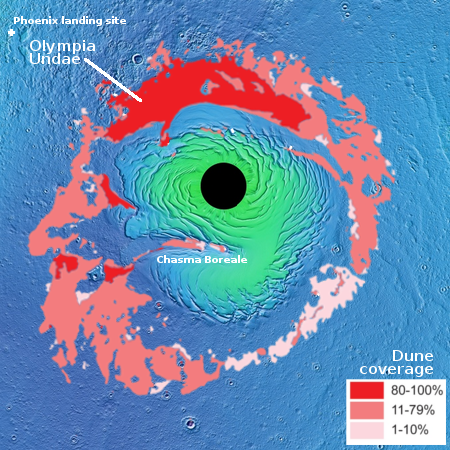
Click here and here for original images.
In the past half year the Mars rover Curiosity has moved into the mountainous foothills of Mount Sharp, crossing the roughest and rockiest terrain seen during its entire decade-long sojourn on the red planet.
Such terrain poses a serious threat to the rover’s already damaged wheels. Since early in the mission the science team had discovered that the wheels were more easily damaged by the Martian surface than had been expected when they were designed. Since then engineers have been very careful about picking the rover’s route, weaving it in and out to avoid the worst ground. They also take images of the wheels every few months to see if any additional damage has occurred.
The bottom image to the right is part of the most recent wheel survey, taken on January 11, 2022, the 3,353 sol the rover has been on Mars. The top image was taken about six and a half months earlier, in early June 2021. The numbers indicate the same tread areas in both pictures.
Based on this one comparison of part of one wheel, it appears that Curiosity’s wheels have not experienced much new damage, even though during the last half year it has climbed into the mountains and has been traveling continuously over rocks, stones, and boulders. Even now, as its sits in the stone valley beyond Gordon Notch, the ground everywhere is stark and forbidding. Yet, this wheel appears to show no new damage, suggesting that the rover’s full set of wheels are also holding up quite well considering its recent travels.
I focus on this particular wheel because it is the same wheel I have used for comparison since 2017, and thus provides a nice baseline for change. In fact, a comparison of today’s image with the one from 2017 shows that in four years there has been practically no change.
This data is quite encouraging, and bodes well for the mission, suggesting there is really nothing to stop Curiosity from climbing Mount Sharp for years to come.
Of course, this is a comparison of only one part of one of Curiosity’s six wheels. A review of the other wheels might suggest a different conclusion. I suspect however that the other wheels show the same thing. The engineers of Curiosity have done a miraculous job protecting the wheels these last four years.













